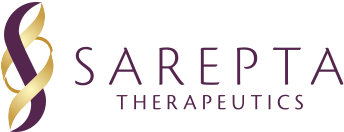« Back
AVI BioPharma to Present at the 6th Annual Biodefense Vaccines and Therapeutics Meeting
06/09/08 3:22 PM EDT
Opening Presentation to Highlight AVI’s Antiviral Therapeutics Program
For Immediate Release
PORTLAND, OR — June 9, 2008 — AVI BioPharma, Inc. (NASDAQ: AVII) today announced that Patrick Iversen, Ph.D., AVI’s Senior Vice President of Strategic Alliances, will make the opening presentation of the Pre–Conference Symposium to the 6th Annual Biodefense Vaccines & Therapeutics Meeting to be held June 9–11, 2008 in Washington, D.C. The Symposium is titled “Developments in Biodefense Vaccines & Therapeutics” and Dr. Iversen’s presentation is “Multiple Phosphorodiamidate Morpholino Oligomer Approaches to Developing Antiviral Therapeutics”.
This is an invitation–only meeting at which Dr. Iversen will principally outline AVI’s progress on the development of its therapeutic drugs against agents on the bioterrorism list, in particular Ebola, Marburg and Dengue viruses.
In May of this year, the company announced that treatment of non–human primates with either the antisense drug AVI–6002 or with AVI–6003, resulted in a reproducible and high rate of survival in the face of an otherwise lethal infection with Ebola or Marburg virus, respectively. Treatment of mice with AVI compounds designed for the treatment of Dengue virus infection have also resulted in reproducible and high rates of survival in the face of otherwise lethal infections.
About Ebola Zaire, Marburg Musoke and Dengue Viruses
Ebola Zaire virus has been the most frequent cause of field outbreaks of Ebola hemorrhagic fever and is endemic to sub–Saharan Africa. Ebola hemorrhagic fever is a rare disease that can be fatal. Outbreaks first occurred in 1976 in Zaire and in western Sudan. A recent outbreak occurred in November of 2007 in Uganda ending in January of 2008. Infected individuals develop high fevers, headache, muscle aches, vomiting, and abdominal cramping. In fatal infections, bleeding is observed from the nose, eyes, rectum and urethra. There is uniform mortality once hemorrhagic signs appear as a result of exposure to the Ebola Zaire virus.
Marburg Musoke virus is the cause of Marburg hemorrhagic fever, a rare disease that occurs naturally in sub–Saharan Africa. Marburg hemorrhagic fever was first described in 1967 when outbreaks in Germany and the former Yugoslavia were linked to monkeys imported from Uganda. The symptoms include fever, diarrhea, vomiting, massive bleeding from multiple organs and shock. Death generally occurs between 5 and 10 days after the onset of symptoms.
Marburg and Ebola virus are both members of the filoviridae viral family and both are National Institutes of Allergy and Infectious Disease (NIAID) priority A pathogens and bioterrorism suspect agents of interest to Bioshield.
Dengue virus is a member of the flaviviridae viral family and is also an NIAID priority A pathogen. Dengue virus is the cause of a complex of clinical syndromes referred to as Dengue fever–dengue hemorrhagic fever. Dengue is transmitted primarily by Aedes aegypti mosquitos, so the infection is geographically located primarily in tropical climates of the world. Dengue produces more human illness than any other insect transmitted viral disease. There are currently no commercially available vaccines, chemoprophylactics, or effective therapeutics for dengue.
About AVI BioPharma
AVI BioPharma develops therapeutic products for the treatment of life–threatening diseases using third–generation NeuGene® antisense drugs and alternative RNA splicing technology. AVI’s alternative RNA splicing technology is initially being applied to potential treatments for Duchenne muscular dystrophy. AVI’s NeuGene compounds are also designed to treat cardiovascular restenosis. In addition to targeting specific genes in the body, AVI’s antiviral program uses NeuGene antisense compounds to combat disease by targeting single–stranded RNA viruses, including Marburg Musoke and Ebola Zaire viruses. More information about AVI is available at www.avibio.com.
This section of our website may contain dated or archived information which should not be considered current and may no longer be accurate. For current information, you are encouraged to review our most recent official corporate documents on file with the U.S. Securities and Exchange Commission.
